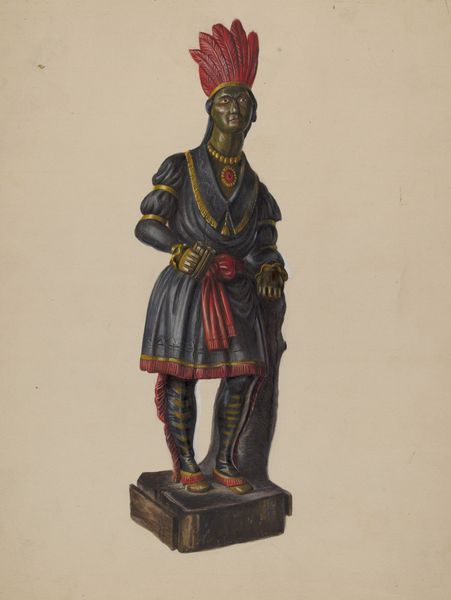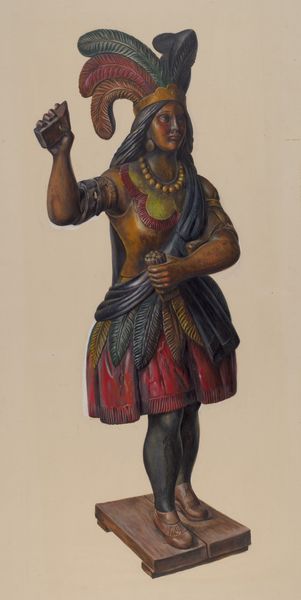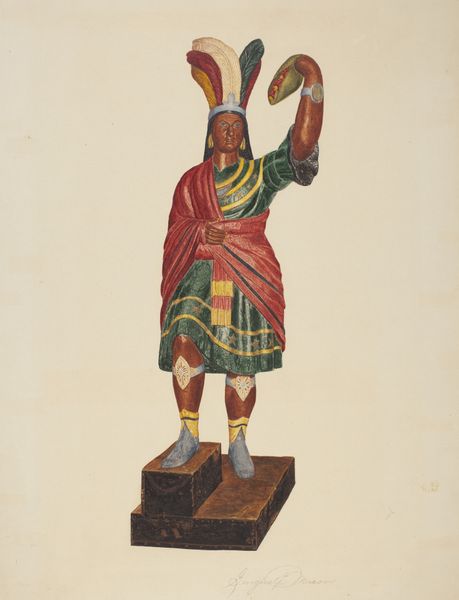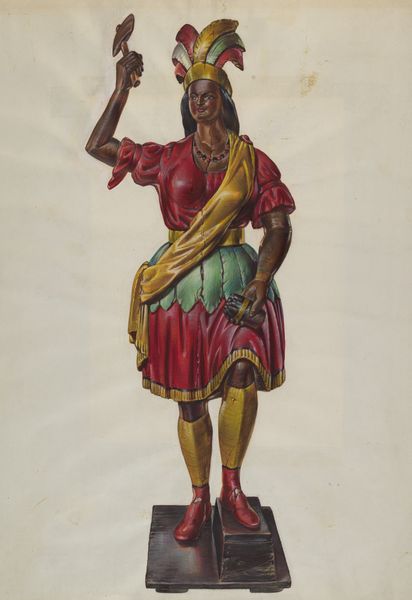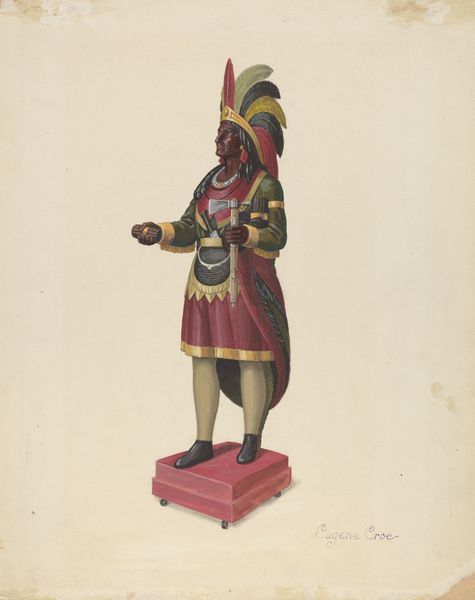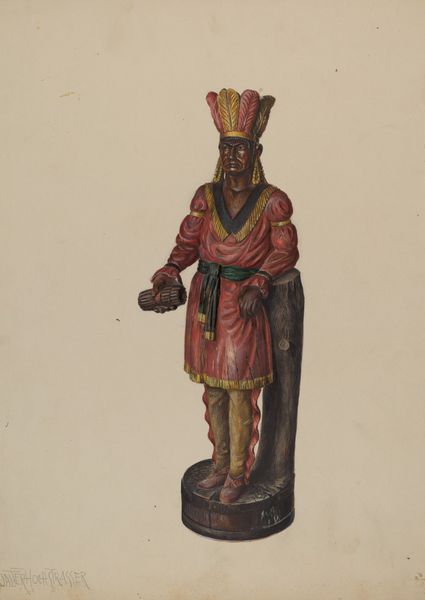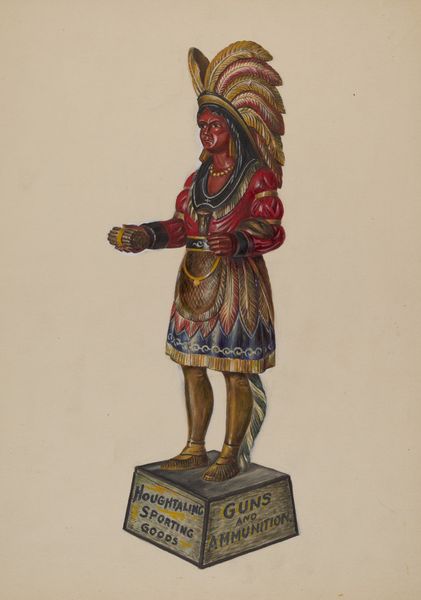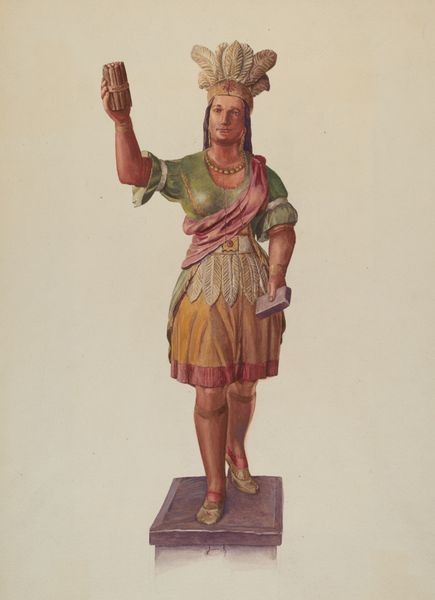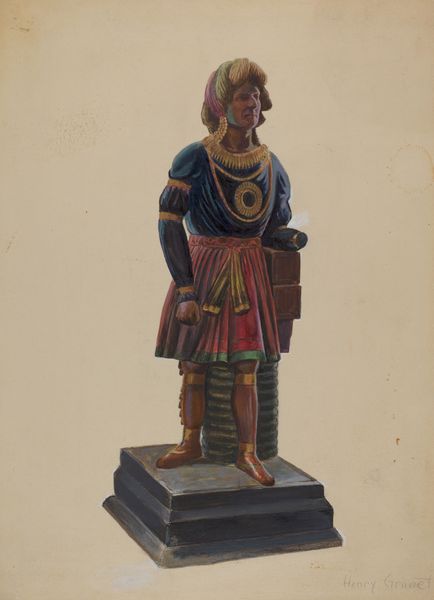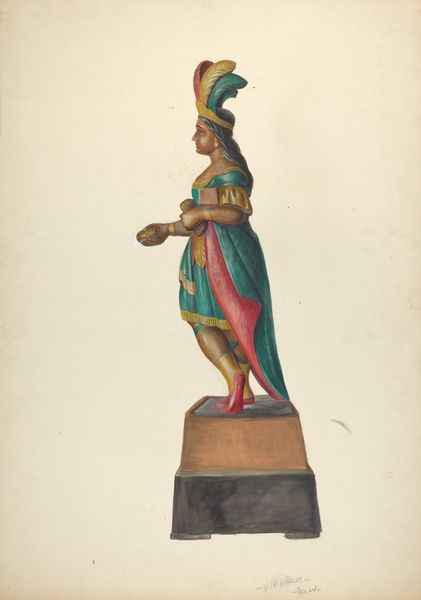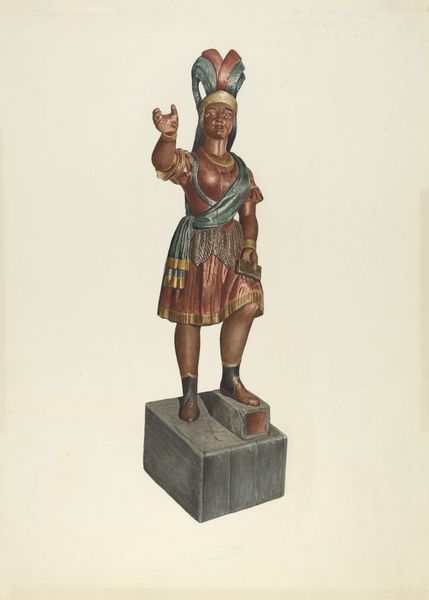
#
portrait
#
charcoal drawing
#
figuration
#
portrait reference
#
portrait art
#
watercolor
Dimensions: overall: 49.2 x 30.3 cm (19 3/8 x 11 15/16 in.)
Copyright: National Gallery of Art: CC0 1.0
Editor: This is James McLellan’s "Cigar Store Indian," dating from around 1939. It's a watercolor drawing and appears to depict a sculpture, complete with wheels. I'm struck by the kind of folksy, almost naive quality, and I'm curious how it speaks to its historical context. What's your interpretation of this piece? Curator: It's important to consider the very materials: watercolor rendering an image of a three-dimensional object meant for commercial display. McLellan is not simply depicting the sculpture, but the *process* by which these sculptures become signs, commodities. The wheels underneath also speak volumes – it makes this figure portable, easily moved to better attract customers, essentially another piece of machinery for boosting profit. Does the method of production behind the sculpture, itself, interest you? Editor: It does. The original sculptures were often made of carved wood, and then mass-produced, right? How does that factor into your analysis? Curator: Exactly! The shift from handmade craft to machine-made object cheapened the Indigenous image for wider consumption. And notice how the Native figure is displayed here, what is she selling? McLellan calls attention to the commercial exploitation, with the artist turning it into fine art through watercolor and a conscious study of that visual history. We, as viewers, are prompted to consider our role in this consumption cycle too, no? Editor: So McLellan is inviting us to think about not just what's being represented, but how the representation itself is a form of labor and commerce. Curator: Precisely! He turns a common advertisement into an item of reflection, highlighting its production, dissemination, and even its intended obsolescence in the marketplace. Editor: That gives me a completely different perspective on what I initially saw as simple folk art. Thank you. Curator: Likewise, understanding the sculpture's transition from artisan craft to commodity truly enriches our engagement with this piece, and, by extension, the complicated relationship between art, labor, and cultural appropriation.
Comments
No comments
Be the first to comment and join the conversation on the ultimate creative platform.
